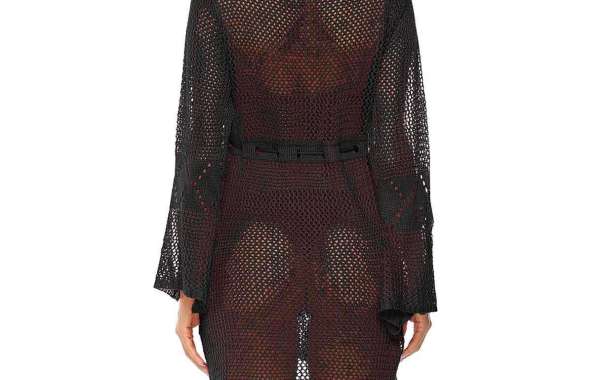Pakistani dresses are a testament to the countrys rich cultural heritage and evolving fashion sensibilities. Known for their intricate designs, vibrant colors, and luxurious fabrics, these dresses embody the fusion of traditional craftsmanship with contemporary styles. From daily wear to festive occasions, Pakistani clothing offers a wide range of options for people of all ages and preferences.
This guide explores the beauty, diversity, and cultural significance of Pakistani dresses, highlighting their timeless appeal and modern transformations.
Cultural Significance of Pakistani Dresses
Pakistani dresses are deeply rooted in tradition, reflecting the countrys history, geography, and cultural diversity. Each region of Pakistan has its distinct style of dress that represents its heritage. For instance, Sindhi dresses feature intricate mirror work, Balochi dresses are known for their heavy embroidery, and Pashtun attire boasts vibrant patterns.
Traditional Pakistani clothing also carries cultural and religious significance. Modesty is a key element, with garments like shalwar kameez and dupattas ensuring comfort and coverage. At the same time, these outfits are designed to celebrate beauty and creativity through intricate embroidery, embellishments, and tailoring.
Types of Pakistani Dresses
1. Shalwar Kameez
The shalwar kameez is Pakistans national dress and a staple in every wardrobe. It consists of a long tunic (kameez) paired with loose-fitting trousers (shalwar). This outfit is versatile, worn by men and women, and can be adapted for casual or formal settings.
Womens shalwar kameez often includes vibrant fabrics, embroidery, and embellishments, while mens versions are typically simpler and paired with a waistcoat for formal occasions.
2. Lehenga Choli
Lehenga choli is a traditional outfit often worn during weddings and festive events. It features a flared skirt (lehenga), a blouse (choli), and a dupatta. These dresses are usually made with luxurious fabrics like silk or chiffon and adorned with intricate embroidery, sequins, and beadwork.
3. Anarkali Dresses
Anarkali dresses are long, flowy outfits with a fitted bodice and flared skirt. Inspired by the Mughal era, these dresses exude elegance and are popular for formal events and parties. They are often crafted from fabrics like georgette and velvet, with heavy embellishments for a regal look.
4. Sarees
Although sarees are more commonly associated with neighboring India, they hold a special place in Pakistani fashion, especially among the elite. Pakistani sarees are known for their elegance and are often made from chiffon, silk, or organza. They are adorned with delicate embroidery, sequins, or beadwork, making them a popular choice for weddings and evening events.
5. Kurtis
Kurtis are shorter versions of the kameez, typically paired with trousers, jeans, or leggings. They are a favorite among younger women for casual and semi-formal wear, offering comfort and style.
6. Bridal Wear
Pakistani bridal dresses are the epitome of luxury and grandeur. They include lehengas, shararas, ghararas, and heavily embellished maxi dresses. Bridal outfits are often crafted in rich hues like red, gold, and maroon, featuring intricate embroidery, zardozi work, and Swarovski embellishments.
Fabrics Used in Pakistani Dresses
Pakistani dresses are made from a variety of fabrics, each chosen to suit the occasion, season, and desired aesthetic.
- Cotton: Perfect for daily wear, especially in the summer, due to its breathability and comfort.
- Lawn: A lightweight fabric popular for summer casual and formal wear, often printed with vibrant designs.
- Silk: Associated with luxury, used for festive and bridal outfits due to its smooth texture and elegant sheen.
- Chiffon: A lightweight, flowy fabric often used for formal wear and evening dresses.
- Velvet: Adds a touch of opulence, commonly used in winter bridal and festive wear.
Embellishments and Techniques
Pakistani dresses are renowned for their intricate embellishments and hand-crafted techniques, including:
- Embroidery: Patterns created using threadwork, often floral or geometric in design.
- Zardozi: Gold or silver thread embroidery, adding a regal touch.
- Mirror Work: Decorative mirrors sewn onto the fabric, popular in Sindhi attire.
- Beadwork and Sequins: Enhance the glamour of party and bridal dresses.
- Block Printing: Traditional patterns printed onto fabric using wooden blocks.
Modern Trends in Pakistani Dresses
While traditional styles remain timeless, modern Pakistani fashion blends these classic elements with contemporary trends. Designers are experimenting with silhouettes, fabrics, and embellishments to appeal to a global audience.
- Fusion Wear: Combining traditional Pakistani elements with Western styles, such as pairing kurtis with jeans or creating shalwar kameez with modern cuts.
- Pastel Hues: Soft pastel colors are increasingly popular, replacing traditional bright and bold palettes for formal and bridal wear.
- Minimalism: Modern Pakistani fashion includes simpler designs with subtle embellishments, catering to those who prefer understated elegance.
- Sustainability: Eco-friendly fabrics and practices are gaining traction in Pakistani fashion, reflecting global shifts toward sustainability.
Popular Pakistani Designers
- Hassan Sheheryar Yasin (HSY): Known for luxurious bridal and formal wear.
- Maria B: Offers a mix of traditional and contemporary designs, popular for bridal and casual collections.
- Sana Safinaz: Known for chic and modern outfits, including pret and formal wear.
- Asim Jofa: Renowned for intricate embroidery and opulent bridal collections.
- Elan: Specializes in high-end couture and luxury prt wear.
How to Style Pakistani Dresses
- Jewelry: Pair with traditional jewelry like jhumkas, necklaces, and bangles for an authentic look.
- Footwear: Khussas or sandals complement traditional outfits, while heels can add elegance to formal dresses.
- Dupatta Styling: Experiment with draping styles for a modern or traditional touch.
Conclusion
Pakistani traditional dresses are a celebration of culture, artistry, and evolving fashion trends. Their versatility makes them suitable for a range of occasions, from everyday wear to grand celebrations. Whether you appreciate the intricate craftsmanship of traditional attire or the sleek appeal of modern designs, Pakistani traditional dresses offer something for everyone. Embracing these outfits means not only enhancing your wardrobe but also celebrating a rich cultural heritage that continues to inspire and evolve.










